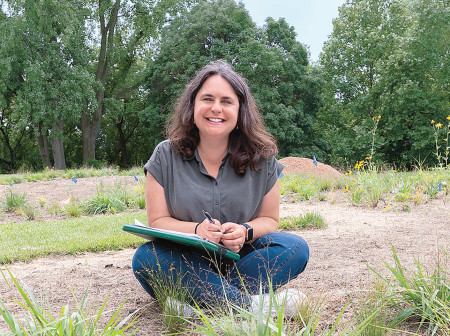You can add climate change to the list of threats that might harm certain species of bees.
A study done by Northwestern and the Chicago Botanic Garden found that warmer temperatures may drive local extinction of mason bees in naturally warm climates.
In a two-year field experiment that altered the temperature of the bees’ nests to simulate a warmer future climate, 30 percent of bees died in the first year, and 73 percent died in the second year. The control group had a mortality rate of less than 5 percent.
“The projected temperatures appear to be pushing this species up against its physiological limits,” says Paul CaraDonna, who led the research. “This is evidence that we might see local extinction in the warmer parts of this species’ range, which is pretty sobering.”
To study how climate change affects mason bees, CaraDonna’s team set up three types of artificial nesting environments in Arizona’s Santa Catalina Mountains, north of Tucson, where the bees thrive. This species of mason bee (Osmia ribifloris), native to the western United States and northern Mexico, builds nests inside holes and cracks in dead tree stumps.
The team manipulated the temperatures of the nests by painting them to simulate past, present and future climates. The team painted a third of the nests black to absorb more radiant heat, thus simulating a warmer climate predicted for the second half of the 21st century. By painting another third with a white, reflective, cooling treatment, the team sent those nests back in time to a cooler climate similar to that of the 1950s. As a control, the team painted the final third of nests with a transparent paint, leaving their natural wood color.
“It’s pretty low-tech, but it works,” says CaraDonna, an assistant professor of instruction in the Program in Plant Biology and Conservation and a research scientist at the Chicago Botanic Garden.
CaraDonna notes that the bees in nests simulating past and current climates woke up from diapause, or insect hibernation, and emerged in February over the course of 10 to 15 days, which is normal. The bees nesting in the warmer boxes, however, emerged from diapause over the course of 50 days.
This unusual pattern, CaraDonna says, suggests what can happen under more stressful temperature conditions. He also notes that the bees in the warmer nests emerged with smaller bodies and lower body fat.
“For insects, size is a big deal,” he says. “Bigger is usually better. It means you have greater energy stores. As a bee, that means you are likely able to reproduce more, which has implications for the stability of the population.”
This study looked at just one species, CaraDonna notes, but it gives researchers some clues about what to look for in terms of the consequences of temperature increases and climate change more generally, especially when temperatures get more extreme.
“There’ll be winners and losers,” says CaraDonna, whose research looks at plant-pollinator interactions. “Some species will be OK, but as our study shows, there are likely to be some species that just can’t hack it when you ramp up temperatures. If we start to lose pollinators and the plants that rely on them become compromised under climate change, what does that do to the whole web of interactions these species are embedded within?”




Reader Responses
No one has commented on this page yet.
Submit a Response